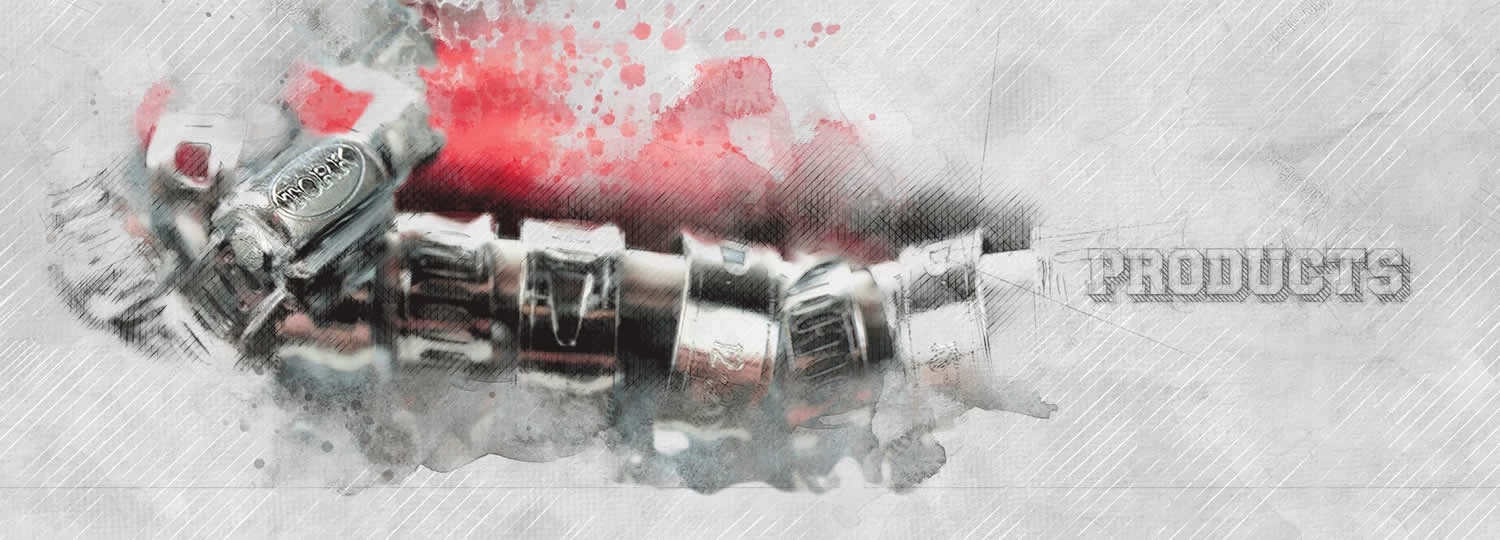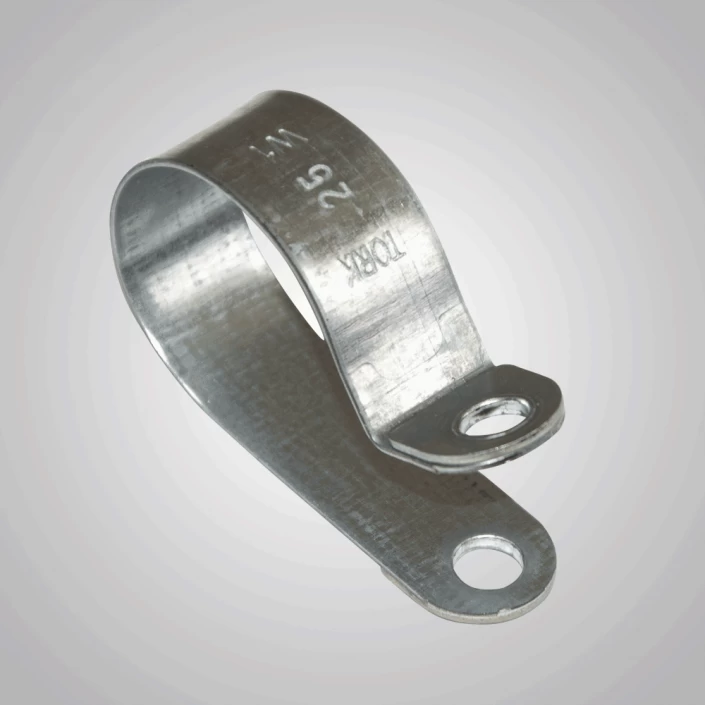DIN 3016 Connection Clamp
What Are Connection Clamps?
Connection clamps are connector parts for hose and pipes generally made of metal and other materials. They are produced with DIN 3016 standards with reliable gripping structure.
Connection Clamps Turkey
Tork clamps provide the best product of connection clamps Turkey with high quality and standards within large scale of production and the experience in exporting worldwide. Contact Tork for more information on connection clamps with the best and available price option.
Connection Clamp Type
Connection clamps can be found in two different types; There are options with rubber-lined connection clamps and also available without rubber connection clamps.
Rubber-lined Connection Clamp
Rubber-lined connection clamps enable maximum resistance and eliminate vibrating, helping noise control. They are also called connection clamps with nuts. They are used for mounting pipes and hoses for strong and durable results. Rubber-lines connection clamps are mainly preferred in hydraulic systems to prevent leaking and protect the installation. However, these types of connection clamps with nuts are used in many other heavy industries as well.
Connection Clamp without Rubber
Connection clamps without rubber are used in wall pipes for either horizontal or vertical needs. They are also called connection clamps without nut.They are easy and safe to assemble. The perfect finish materials enable comprehensive connection.
How to Use a Connection Clamp?
The strong structure and adjustable band enable easy installation with correct close and provides durable mounted wall pipes, hoses with true connector pieces. True grip enables to minimize vibrating and tearing for the hydraulic systems.
What Are Connection Clamps Used For?
Connection clamps are used in many areas in the heavy construction industry. The widely used areas of connection clamps in building construction, shipbuilding, hydraulic pipes, water supply sections, mining sector automotive, solar energy systems, household applications, LPG autogas systems etc. For durable, strong and multifunctional fixing alternatives the connection clamps are the best and affordable solution for any construction and installation needs.
What Materials Are Used in Connection Clamps?
Connection clamps are available in various materials, each selected for specific applications. Stainless steel clamps are prevalent due to their strength and corrosion resistance, making them ideal for outdoor or challenging environments. For electrical applications, plastic and rubber clamps are favored for their insulating properties. Aluminum clamps offer a lightweight yet strong alternative, suitable where weight is a concern. The choice of material is vital as it affects the clamp's durability, flexibility, and environmental suitability.
How to Choose the Right Size of Connection Clamp?
Choosing the right size for a connection clamp is crucial for a secure fit. Match the clamp size to the diameter of the object being secured. A clamp too large can be loose, while a too-small clamp may not close properly or could cause damage. Refer to manufacturer sizing charts based on the outer diameter of the hose, pipe, or cable, and consider the clamp's width and thickness for optimal grip and performance.
How to Choose the Right Connection Clamp for Your Needs?
Selecting the appropriate connection clamp requires considering the application type (plumbing, electrical, automotive, construction), environmental conditions (chemical exposure, moisture, temperature), and specific features (adjustment range, ease of installation, certifications). These factors ensure the clamp performs effectively in its intended use.
Comparing Different Types of Connection Clamps
Different types of connection clamps serve various purposes. Worm drive clamps are versatile for automotive and industrial use. Spring clamps offer constant tension, ideal for fluctuating pressure environments. Wire clamps are suitable for tight spaces in electronics and aviation, while T-bolt clamps provide strong clamping force for high-pressure applications. Understanding these types helps in making an informed choice based on specific needs.
How to Maintain and Care for Connection Clamps?
Maintaining connection clamps involves regular inspections for wear or damage, cleaning them, especially if used in harsh environments, and using appropriate tools for adjustments to avoid over-tightening. Proper storage is crucial for reusable clamps. These practices extend the clamps' effectiveness and safety.
Safety and Maintenance Tips for Connection Clamps
Safety with connection clamps involves choosing the right clamp for the application, wearing safety gear during installation, following manufacturer guidelines for installation and tightening, and regular checks for wear or damage. These practices minimize risks and ensure a secure connection.
Longevity and Durability of Connection Clamps
The durability of connection clamps depends on material quality, environmental exposure, and usage. High-quality materials and proper installation and maintenance extend a clamp's life. Consider environmental factors like chemicals, temperature, and moisture when choosing clamps.
What Safety Precautions Should Be Taken When Using Connection Clamps?
Safe use of connection clamps involves selecting the appropriate type and size for the application, inspecting for defects before installation, adhering to manufacturer's tightening specifications, using safety gear, and regular checks for wear or loosening. These precautions maintain a secure environment and prolong clamp life.
FAQ About Connection Clamp
Please have a look at the frequently asked questions about connection clamps for your needs and do not hesitate to contact Tork Clamps teams for more information and offers.
How Strong is a Connection Clamp?
The heavy connection clamps are used in many industries that are made from steel, metal or other materials to keep the pipe and hose strong. They can carry up to 15kg with correct installation and configuration in the industrial needs. For more information consult the Tork clamp team.
How to Use Connection Clamp
Using connection clamps is easy. With the option of rubber-lined connection clamp and without rubber connection clamp, longer and stronger pipes and hoses can be mounted in vertical and horizontal plan.
What Are The Types of Connection Clamps?
Tork clamps produces and exports connection clamps to many countries worldwide with the best quality and price. Tork offers two different types of connection clamps for any needs and use. One of the options is a rubber-lined connection clamp that is also called connection clamp with nuts, that are commonly preferred by many industries and buyers. The other option is the standard connection clamp without rubber that can be ordered easily.
Can Connection Clamps Be Reused?
Many connection clamps particularly those made from durable materials like stainless steel, are designed for reuse. However, their reusability depends on their condition post-removal. Clamps showing significant wear, corrosion, or damage should be replaced for safety. While reusable clamps are cost-effective and eco-friendly, the safety and integrity of the connection should always be the priority.
Are There Different Types of Connection Clamps?
Yes, there is a wide variety of connection clamps available, each tailored for specific applications and environments. Key types include worm drive clamps, spring clamps, wire clamps, and T-bolt clamps, each with unique features and benefits. Understanding these differences is crucial in selecting the most suitable clamp for your specific needs.
How to Properly Install a Connection Clamp?
To effectively install a connection clamp, first choose the right size and type for your application. Position the clamp correctly around the object and tighten it using the appropriate tool, being careful not to over-tighten. Adhere to the manufacturer's guidelines for installation and torque specifications. Regular checks and adjustments are recommended to ensure ongoing secure fitting.


